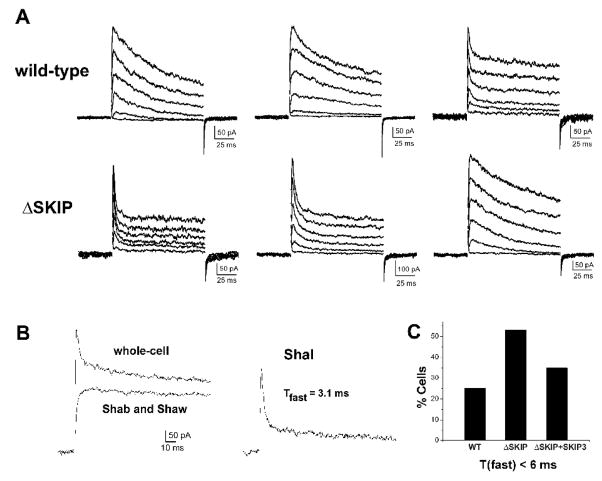Fig. 7. The Inactivation Rate of Shal K+ Currents is Affected by the Loss of SKIP3.
(A) Whole-cell voltage-clamp recordings of three representative wild-type (top row) and Df(3R)Exel6190 (ΔSKIP, bottom row) neurons are shown. K+ currents were activated by 120 ms voltage jumps to −50 to +50 mV, in 10 mV increments, from a holding potential of −100 mV; capacitative transients have been clipped for illustration purposes. Inactivation rates varied from cell to cell, however, almost twice as many Df(3R)Exel6190 neurons displayed the very fast inactivating A-type currents (bottom row, left and middle recordings). (B) Separation of Shal current from Shab/Shaw currents by pre-pulse potential. In one representative neuron, the whole-cell K+ current is shown in response to a voltage jump to +50 mV from a 500 ms pre-pulse of −125 mV (left, top trace). With a pre-pulse of −45 mV, the transient A-type current encoded by Shal is completely inactivated and only the delayed-rectifier currents encoded by Shab and Shaw are activated (left, bottom trace). Subtraction of the Shab/Shaw currents from the whole-cell current yields the Shal K+ current (right). In this neuron, the inactivation time course of the Shal current (first 30 ms after peak) is fit with a single exponential function (best fit with τfast =3.1 ms). (C) Quantification of the percentage of wild-type (WT) and Df(3R)Exel6190 (ΔSKIP) neurons containing a Shal current with an inactivation rate that corresponds to Shal channels exclusively in the “fast” gating mode (τfast< 6 ms). Shal currents were isolated as in (B), and the inactivation time course 30 ms following peak current was fit with the single exponential decay function, y(t)=Ae(−t/τfast) + c. In contrast to 25% of wild-type neurons (N=16), 55% of Df(3R)Exel6190 (ΔSKIP) neurons (N=20) contained a Shal current with τfast< 6 ms. Transgenic expression of myc-SKIP3 in Df(3R)Exel6190 neurons (ΔSKIP + SKIP3) showed partial rescue, with 35% (N=17) containing a Shal current with τfast< 6 ms.

